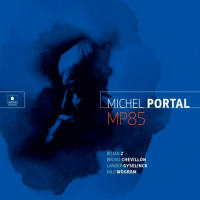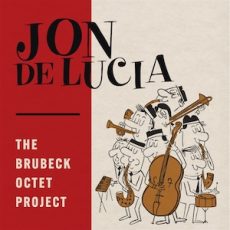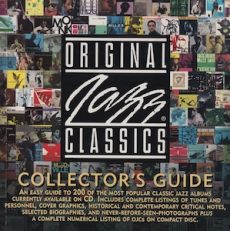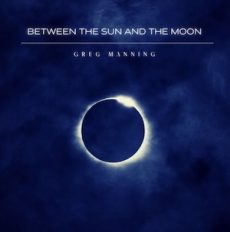
Daily Dose Of Jazz…
Michel Portal was born on November 27, 1935 in Bayonne, France into a musical family and home filled with several instruments growing up. His interest in jazz began after hearing it on the radio after World War II. He studied clarinet at the Conservatoire de Paris and conducting with Pierre Dervaux.
Gaining experience in light music with the bandleaders Henri Rossotti and with Perez Prado in Spain in 1958, Michel performed with drummer Benny Bennett, Raymond Fonsèque, Aimé Barelli and for many years, the singer Claude Nougaro.
Portal co-founded the free improvisation group New Phonic Art. During 1969, he played on a recording of Karlheinz Stockhausen’s Aus den sieben Tagen.
He began scoring music for films in the 1980s. He won the César Award for Best Music Written for a Film three times. Playing both jazz and classical music and is considered to be “one of the architects of modern European jazz.
Composer, saxophonist, and clarinetist Michel Portal continues to perform and record.
More Posts: bandleader,clarinet,composer,history,instrumental,jazz,music,saxophone

Daily Dose Of Jazz…
Jon De Lucia was born on November 26, 1980 in Quincy, Massachusetts. He is predominantly a student of jazz, but also has a deep interest in the folkloric music and instruments of Cuba, Japan, Ireland and Italy. He has performed on a variety of ethnic flutes, drums and stringed instruments.
Having led his groups and played as a sideman in Boston, Massachusetts, New York City and all over Japan, he has worked with Tommy Crane, David Tronzo, Bob Moses, Bob Gullotti, John Lockwood and Thomas Morgan among others.
He leads the Jon De Lucia Group, and the baroque improvising Luce Trio. Saxophonist and composer Jon De Lucia, now based in Brooklyn, New York, continues to compose, perform and teach full time at BMCC in Tribeca, New York.
More Posts: bandleader,composer,history,instrumental,jazz,music,saxophone

On The Bookshelf
Original Jazz Classics Collector’s Guide
An easy guide to 200 of the most popular classic jazz albums currently available on CD. Includes complete listings of tunes and personnel, cover graphics, historical and contemporary critical notes, selected biographies, and never-before-seen-photographs plus a complete numerical listing of OJCs on compact disc.
Original Jazz Classics Collector’s Guide: 1995
Fantasy Inc.

Daily Dose Of Jazz…
Rusty Bryant was born Royal Gordon Bryant on November 25, 1929 in Huntington, West Virginia and grew up in Columbus, Ohio where he became a fixture of the local jazz scene.
He worked with Tiny Grimes and Stomp Gordon before founding his own ensemble, the Carolyn Club Band in 1951. Signing with Dot Records in 1954 Rusty released several albums as a leader in the second half of the 1950s. In 1953, his live recording All Nite Long which was a faster version of Night Train, became a hit R&B single in the U.S.
With his Dot contract ending in 1957 he returned to Columbus to do mostly local engagements, playing often with pianist-organist Hank Marr and a young Nancy Wilson also sang in his group. It was not until his appearance on the 1968 Groove Holmes album That Healin’ Feelin’ that he resurfaced beyond regional acclaim, and soon after he began leading dates for Prestige Records.
Bryant recorded extensively for the label from 1969 through the middle of the 1970s, being a sideman with Ivan “Boogaloo Joe” Jones, Johnny “Hammond” Smith, Charles Kynard, and Sonny Phillips. His 1970 release Soul Liberation was his most commercially successful, reaching No. 35 on the U.S. Black Albums chart and No. 15 on the Top Jazz Albums chart.
Tenor and alto saxophonist Rusty Bryant, who recorded into the early 1980s before returning to Columbus and played mostly local dates, died on March 25, 1991.
More Posts: bandleader,history,instrumental,jazz,music,saxophone

Daily Dose Of Jazz…
Greg Manning was born on November 24, 1965 in Nigeria and raised in Zurich, Switzerland. While growing up he was mostly exposed to jazz by his parents. Yet, he discovered his deep love for music only after hearing Stevie Wonder’s Isn’t She Lovely. He started playing the piano at twelve and several years later moved to the United States to study piano and film scoring at Berklee College of Music in Boston, Massachusetts.
His big break came when asked to compose the music for Keep Cool, the most successful and longest running German musical. The musical led Manning back to Zurich where he continued to compose and produce for records and television.
Moving to Los Angeles, Calidornia in 2002 where his career took off. The three-time platinum producer for Universal Music Switzerland, and has had several Swiss Chart toppers since 1996. The former keyboardist and music director for Grammy Award-nominated artist Jonathan Butler, he has been the keyboardist for Mindi Abair, Gerald Albright, Will Downing, Richard Elliot, Brian McKnight, Chante Moore, and Kirk Whalum, among others.
Touring extensively for ten years throughout the U.S., Europe, South Africa, and the U.K., Greg made a conscious decision to come off the road. Not long thereafter, he started composing music for film and television. As an artist, his own music is the union of jazz, soul, and funk.
Pianist, composer Greg Manning, who operates in the soul jazz and smooth genres has never stopped composing and continues to record and perform.
More Posts: bandleader,composer,history,instrumental,jazz,music,piano



